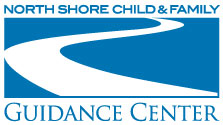ADHD
ADHD
ADHD, or Attention Deficit/Hyperactivity Disorder, is a neurodevelopmental disorder which often begins in childhood. Symptoms of ADHD can include trouble focusing, impulsive behavior, hyperactivity, frequent daydreaming and fidgeting. ADHD symptoms can last through adulthood, though symptoms related to hyperactivity tend to decrease. The Centers for Disease Control and Prevention reports that over 6 million children in the United States have been diagnosed with ADHD as of 2016. The rate of ADHD diagnoses for boys is twice that of girls.
There is no single test that can diagnose ADHD. A diagnosis requires a comprehensive evaluation, which can be performed by a licensed clinician with expertise in ADHD.
ADHD can be managed and treated through behavioral treatment, medication or a combination of the two. According to the CDC, about three in four children with ADHD in the United States receive treatment. Of these, almost half received behavioral treatment, and more than half were taking ADHD medication. School support has been strong, with almost 9 out of 10 children with ADHD receiving accommodations. Additionally, many children diagnosed with ADHD also have other disorders, including behavioral/conduct problems, anxiety, depression or autism spectrum disorder.
North Shore Child & Family Guidance Center offers comprehensive diagnostic assessments by highly qualified teams of caring psychiatrists, psychologists, social workers and mental health counselors with special expertise in diagnosing and treating children. Our Learning to Learn Center offers specialized screening, diagnosis and tutoring for children suspected of having learning and attention deficit problems and developmental disorders. For more information about our services, please call us at 516-626-1971.
Related programs and services:
Learning to Learn Center
Diagnostic Services
Read more on our blog:
Sources:
